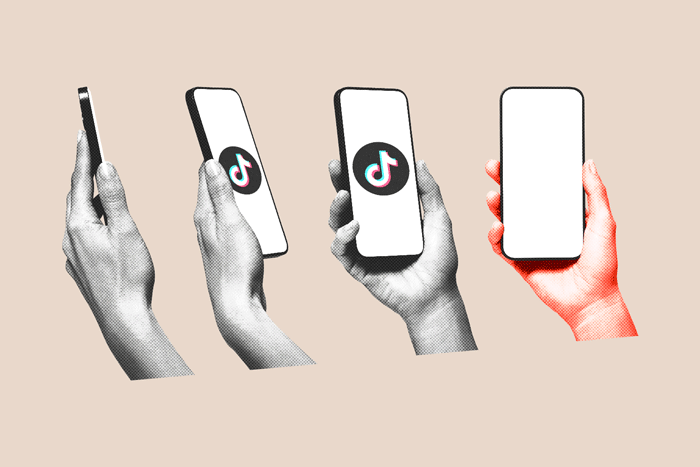Everyone knows that generative artificial intelligence (AI) is the hot topic in the workplace right now. The rise in AI has caused a mixture of excitement and fear as it becomes a standard part of our lives. Some say it’s a risk to civilization, while others insist it is transforming the way we work, live and interact with one another. The part that is not debatable is that AI is on the upswing. Arianna Huffington, founder and CEO of Thrive Global addresses these perceived threats. “AI is ultimately a tool, and its impact will depend on how humanity uses it,” she explains. “The more we can use this moment to bring together a critical mass of people working in good faith and with empathy, the more likely it is that humanity will use AI to flourish.” It sounds like science fiction, but that’s exactly what the newest AI tools are doing—turning the tide when it comes to mental wellness in the workplace.
Using AI To Take Charge Of Your Mental Health
Increasingly, employers know that mental health is a priority, but, according to a recent study, many are unsure of the steps they need to take to make that happen. And with more Gen Zs entering the workforce, it’s essential that companies get it right. The younger cohort has no qualms with job hopping if they believe their health and wellness needs are not met. Now, it’s possible to enlist AI, instead of a human being, to help employees take charge of their mental health. It sounds like an odd coupling, but technology has produced new AI-backed mental health tools that enable employers to better support their employees.
Grace Chang, co-founder and CEO of mental healthcare startup Kintsugi, believes AI’s omnipresence in the workplace gives employees greater control over their mental wellness. Plus, she says it brings the opportunity to better support employees and foster a more productive workforce, more efficient processes and more profitable businesses.
Chang informs me by email that Kintsugi offers AI-backed voice journaling and platforms that provide employees real-time insights into their own mental health and make recommendations on the kind of support needed. “We’re entering a crucial era when it comes to mental wellness at work,” Chang points out. “In 2023, employers know they must make mental health a priority—95% of the employers we’ve surveyed have told us that mental healthcare access is their top care need. They know that the cost of unaddressed mental health challenges is too high to ignore, leading to almost 12 missed workdays per employee per year and costing the U.S. economy $47.6 billion annually.”
Still, Chang says that many business leaders remain unsure about how to best support their teams’ mental health. “There’s been an explosion of employer-focused mental healthcare solutions since the pandemic—from wellness apps to coaching to therapists to digital therapeutics and more. We’ve reached the point where employers are spolit for choice. Therefore, matching employees to the right interventions at the right time is a greater challenge than ever.”
AI Detects Mental Health Conditions From Your Voice
Another hurdle, according to Chang, is that in the past employers generally had no way of measuring how well any given mental health intervention is working. Without objective data pointing to an ROI, she emphasizes, it can be difficult to justify continuing with a program or app. But this is at odds with the mental health field, which has traditionally relied on subjective, as opposed to objective, insights.
She explains that AI-powered solutions like Kintsugi Voice are designed with these challenges in mind. “Kintsugi Voice detects signs and severity of mental health conditions in real-time, just by listening to someone’s voice,” she adds. “Our tech seamlessly integrates with care management call centers and telehealth platforms, where it ‘listens’ in the background, with patient consent.” The technology generates real-time, quantitative insights into someone’s mental wellness that help connect those in need to the right level of behavioral care.
“In the same way, our tool offers an easy and affordable way to track mental health over time, so users can determine whether, and to what extent, an intervention is working for them,” she told me. “Currently, mental health screening takes place once a year (if at all). With our tool, it can take place during every healthcare interaction, bringing with it the opportunity for unprecedented insights into employee mental well-being. Employers can ask their payor-partners to integrate technology like Kintsugi into their care management call centers and telehealth platforms to leverage AI and voice biomarkers to make mental healthcare more personalized, more convenient, higher quality, more affordable and more accessible for everyone.”
Do Employees Feel Secure With AI Mental Health?
The prevailing narrative is that employees fear being replaced by AI or that it will somehow invade their privacy. But are employee fears of AI blown out of proportion? And would employees consent to having AI track their mental health? Chang reveals that in a recent pilot, 80% of a patient population consented to be screened for mental health conditions by the AI-powered voice analysis tool. Based on these findings, she surmises that the majority of people embrace the use of AI in healthcare, as long as it enhances their overall healthcare experience and delivers tangible value.
A separate study by Workhuman found similar results. Over half of workers (58.4%) believe AI won’t put their jobs at risk. And 41% of employees say they anticipate that learning to use AI tools will become a part of their workplace training, and 34.4% believe that learning these tools will be encouraged in general. The data shows that apprehension is strongest among younger employees, including Gen Z digital natives, who have grown up with intimate knowledge of the risks and rewards of new tech. While only 20.4% of workers on average feel that AI puts their job at risk, the figure increases to nearly 30% for Gen Z employees.
These findings are valuable information for leaders implementing AI technology to instill confidence in workers who are concerned that their jobs could be at risk. The Workhuman study recommends that employers ensure that workers have the tools and training they need to understand how the technology works and how it can benefit them. It adds that knowledge and competency will help not only to assuage employees’ AI fears but will help them make the most of the technology in their day-to-day work. The study concludes that when employees feel recognized for their humanity—which can include opinions and concerns around AI at work—and not just their productive output, they’ll likely feel less worried about whether AI has the potential to replace them and more valued as a whole individual.
Read the full article here










